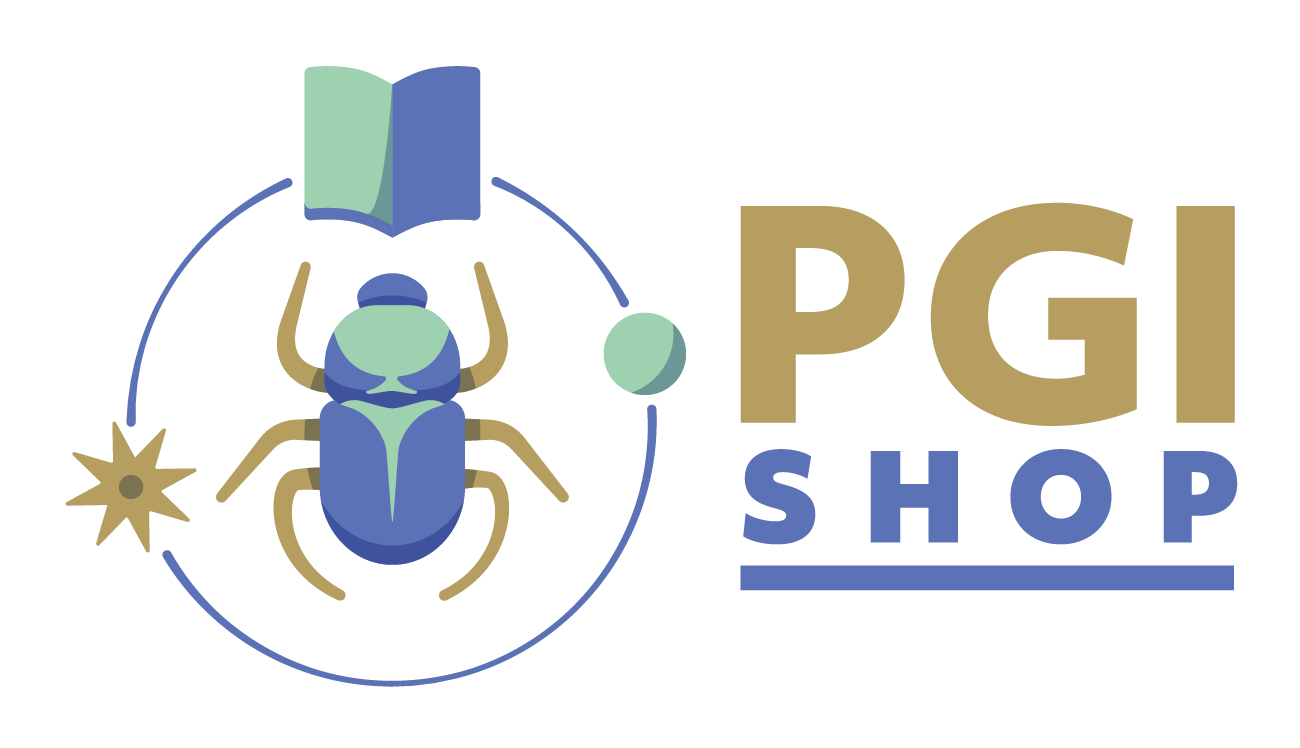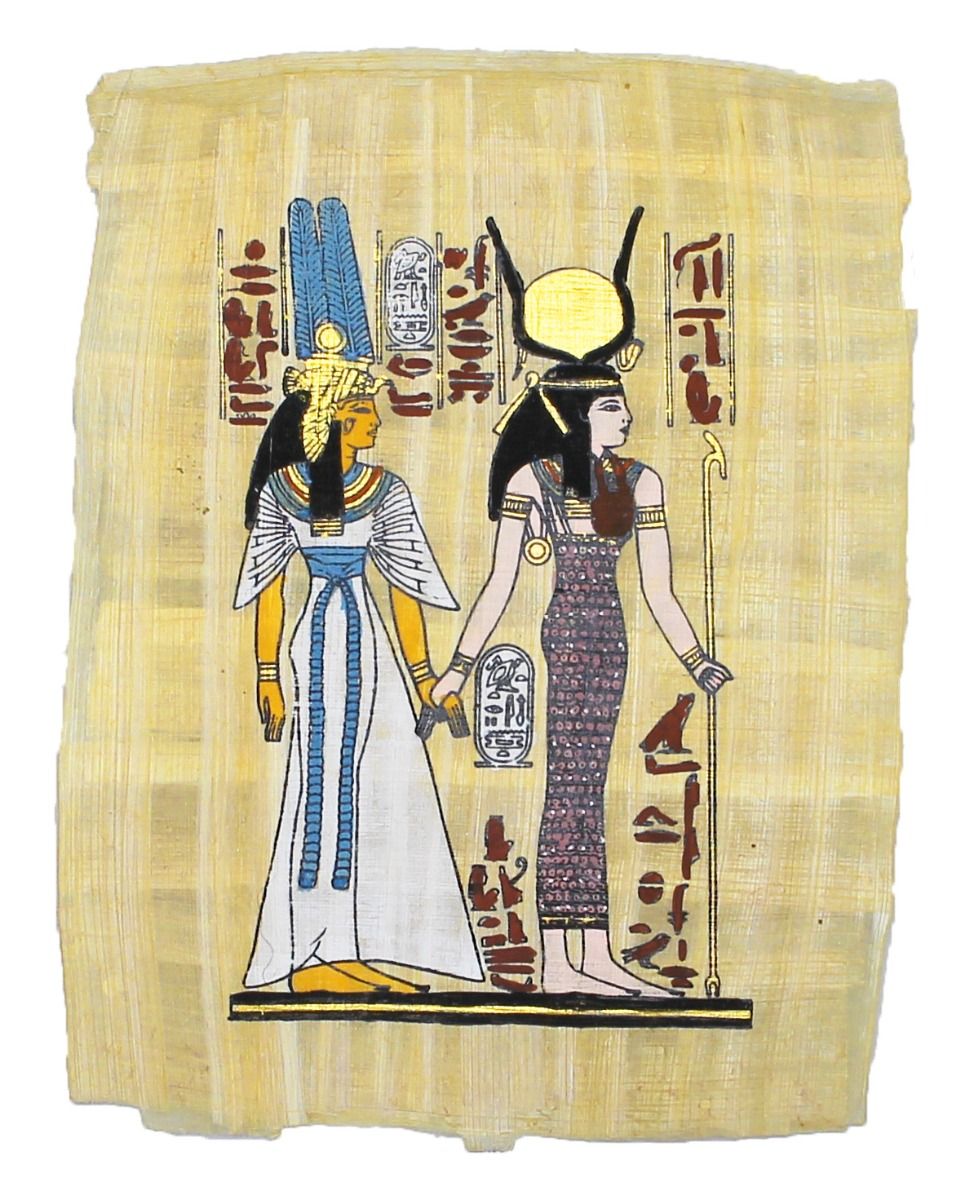Papyrus small formats - Isis and Nefertari painted
Hand-painted natural papyrus with outline motif - natural edge - approx. 13 × 18 cm
The goddess Isis leads Nefertari before the face of the god Chepre. Isis wears a tight-fitting red strap dress, while Nefertari wears a long white linen robe, belted at the waist with a red bandage. Isis is depicted in human form with cow horns and a sun disk on her head.
The goddess Isis, who is very well known throughout Egypt, is always described as the patroness, guardian and caretaker of all beings who are suffering or in great distress. For this reason, she was considered a motherly goddess, a goddess of recovery, protection and magic. According to the famous Osiris myth, Isis was also worshipped as a deity of the dead and as a supporter in the afterlife. The Egyptians were very worried that they would lose their human abilities, such as seeing, speaking, hearing and thinking, when they entered the Otherworld. Isis was supposed to ward off all demons responsible for the loss of human abilities.
God Chepre was usually depicted as a scarab, more rarely as a human with a scarab for a head. His name means "the one who came into being by himself", just as the Egyptians also believed that the sun came into being again by itself from the earth every morning. The connection to the scarab is that it lays its eggs in a dung ball and it seems that its young, like the primordial god himself, come into being without an act of procreation. The beetle pushes the dung ball in front of it like a ball, just as in depictions the scarab pushes the sun disc over the horizon in the morning. Chepre is also associated with resurrection symbolism. Moreover, he is only one of the three figures of Re. Harachte embodies the midday sun and Aton the evening sun.
Nefertari was already married to her husband "Ramses II" before he ascended the throne, and the two already had several children together. In the burial chamber of the high priest Nebwenenef, Nefertari is depicted behind her husband in the so-called "appearance window" of the palace. In the following period, the queen repeatedly appears in scenes behind her husband, which is to be understood as an expression of her high position. Nefertari is mentioned for the last time in the 24th year of Ramses II's reign, at the dedication of the two temples of Abu Simbel, for which the ruling couple travelled specially to Nubia.
Our papyrus range
We offer you light, ochre-coloured natural papyrus from Egypt. You can choose from various hand-laid formats. The design possibilities with papyrus are manifold. You can write on it, paint it or print on it; you can use ink, fibre pens, water-based or tempera paints.
Papyrus is a natural product
In the Nile Delta, papyrus leaves are still produced in the traditional way. Families in the countryside harvest the papyrus stems, which can be up to 6 metres high, and process the raw material into papyrus leaves with great skill. Carefully made papyrus leaves are produced in several steps, which always have an individual, handcrafted character.
Fair trade with Egypt
PGI buys Egyptian products directly from the producer. This allows us to bypass dealer stations and offer our customers favourable prices. But the Egyptian producers also benefit from this direct marketing, they achieve much higher prices for their products. We regularly visit our partners in Egypt and discuss the upcoming needs on site.

